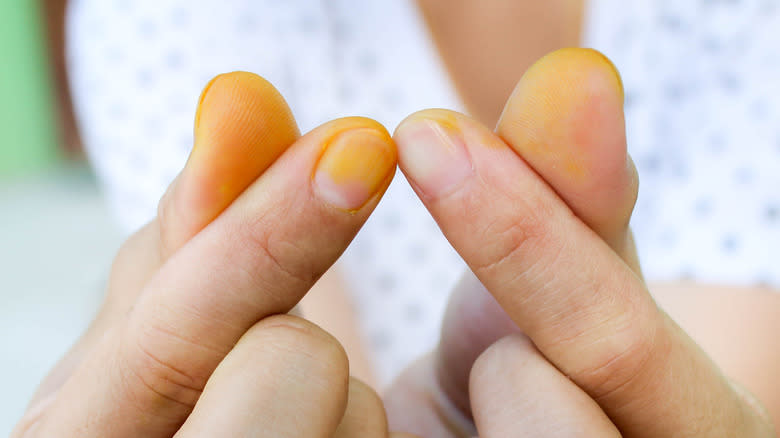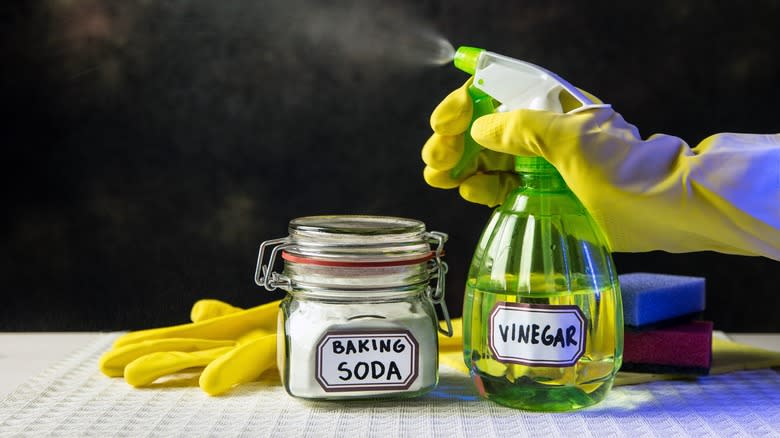The White Vinegar Tip For Removing Pesky Turmeric Stains

Cooking with turmeric can be a delicious, creative, and healthful experience -- but while it might help your brain and heart, home cooks know all too well that your clothing, countertops, dishes, and hands aren't safe from the spice's golden stains. Turmeric is an earthy, pungent, slightly bitter spice in the ginger family. Turmeric's signature asset (and the infamous culprit of those hard-to-get-our stains) is curcumin, a naturally occurring chemical compound with a rich golden pigment, which gives curry and tikka masala their lush yellow hue. Thanks to curcumin's vibrancy, the spice is also often used as a natural dye for fabrics. Sure, it looks great on your dinner table, but less so on your plastic leftover containers or your shirt at a restaurant.
Why are turmeric stains so intense and hard to get out? Curcumin is not water-soluble, which means it's going to take more than just good old H2O to remove that yellow blemish. Enter: white vinegar. White vinegar is made from fermented grain alcohol, aka ethanol, resulting in a mixture that's 4 to 7% acetic acid and 93 to 96% water. The higher the acetic acid content, the tougher the vinegar is on stains (this percentage will be listed on the packaging). As with any stain, the sooner you can start the removal process, the better. Be sure to act quickly. But, with a little white vinegar on hand, you can enjoy turmeric in your golden milk lattes, smoothies, rice, roasted veggies, butter chicken, soups, and muffins stress-free.
Read more: Ina Garten's 12 Best Cleaning Tips For A Mess-Free Kitchen
It Isn't Golden Hour Unless You Say It Is

To remove turmeric stains from dishes and cookware, fill your sink with two parts warm water and one part white vinegar, plus a drizzle of dish soap. Then, pop in the stained dishware and soak for a half hour, making sure the items are fully submerged. After the soak, wash your dishes as normal with dish soap -- and if any lasting turmeric stains remain, a soft-bristled toothbrush can be a helpful scrubber.
If the turmeric stain is on your countertop, the first step is to not freak out. The second step is to whip up a paste from a mixture of white vinegar, water, and baking soda and scrub the stain in a circular motion. You can eyeball the proportions until a paste-like consistency forms. This paste also works for removing turmeric stains from your nails and skin after a round of impassioned cooking. (Important note: If you have natural stone countertops like marble or granite, acidic vinegar should not be used. Make the paste from water and baking soda instead.)
To get turmeric out of fabric, blot the stain with vinegar, then rinse the garment in cold water, repeating until the stain fades. If you need a little extra muscle for particularly stubborn turmeric fabric stains, spot-treat with alcohol, or squeeze some fresh lemon juice onto the stain, allow it to sit for 30 minutes, then wash the item in the sink or laundry machine as normal.
Read the original article on Tasting Table

